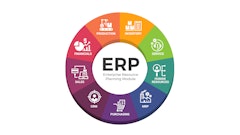
U.S. B2B suppliers are experiencing mixed trends in customer payment behavior, reflecting an uneven impact of current market conditions across industries and sectors, according to the Atradius Payment Practices Barometer, produced by Atradius.
In fact, one-third of B2B suppliers report no significant change in how promptly business customers pay invoices. A nearly equal share of companies receive slower payments compared to the same period last year, while the remaining third note recent improvements in customer payment reliability. These varied experiences highlight the fragmented customer payment risk landscape, leading to financial uncertainty and operational challenges throughout supply chains.
“As high uncertainty continues to cloud the global trading environment, B2B suppliers in the U.S. are split on whether customer insolvencies will increase in the months ahead,” according to the report. “While nearly half anticipate a worsening insolvency outlook, the other half expect stability. By contrast, companies appear more aligned in their approach to working capital management, showing a shared focus on maintaining financial resilience during an unpredictable trading environment. Most firms anticipate Days Sales Outstanding (DSO) will stay the same or shorten, highlighting efforts to strengthen cash flow through more efficient collection practices. Our survey finds a similar outlook for inventory management, with most companies expecting stock turnover to remain unchanged or improve. This points to less working capital being tied up in unsold goods.”
Key takeaways:
· Overdue invoices now affect 43% of credit-based B2B sales for U.S. companies, while most companies report writing off no more than 5% of long overdue B2B invoices.
· 70% of companies are increasing the amount of credit extended to customers, although they are divided on payment terms. Half are pairing increased credit offerings with longer invoice settlement timings, while the other half have unchanged terms.
· Nearly 50% of B2B sales are currently made on credit, and average payment terms are 45 days from invoicing.
· Nearly half of U.S. businesses are delaying payments to their own suppliers as a strategy to maintain liquidity, although this can risk damaging supplier relationships.
· Bank credit remains the dominant trade finance tool to bridge liquidity gaps, used by 68% of B2B suppliers. Other options such as invoice financing, supplier credit and internal funds are used less frequently.
· Acknowledging the risks arising from a fragmented B2B customer payment risk environment, around 60% of businesses employ a blended approach to customer payment risk management. This combines internal provisions and external tools like trade credit insurance, reflecting a strategic effort to protect working capital.
· Majority of U.S. suppliers will use a hybrid approach to managing customer payment risk, combining internal provisioning with outsourced credit‑management tools.
· Agri-food companies are prioritizing robust credit strategies and strategic customer payment risk management because of concern about significant global supply chain disruptions and growing market unpredictability caused by tariffs volatility. 64% of firms see supply chain management as most exposed to trade policy shifts, with 60% prioritizing diversification to mitigate potential risks. 44% feel confident in navigating these changes during the year ahead.
· On a scale of 1 (Not confident) to 5 (Very confident), the average confidence level was 3.95. Nearly three-quarters of respondents (73%), especially mid-sized to large manufacturing and service firms without multinational status, feel well-equipped to manage shifts in national trade policies. Another 22% reported a more neutral or cautious position, while just 5% expressed low confidence, indicating limited widespread concern.
· When asked which business functions are likely to be most affected, 60% cited supply chain management as the top concern. This was followed by import/export costs (55%), regulatory compliance (49%), and market access (41%).
· While customer relationships (34%) and financial planning (23%) were seen as less exposed, they still remain areas of attention. These concerns were consistent across sectors and business sizes, though particularly pronounced among large and non-multinational companies.
· A majority (56%) plan to enhance regulatory compliance, while 54% are diversifying supply chains, highlighting a strong focus on reducing risk and improving resilience. Over half (51%) are increasing domestic production, and 46% are seeking new international markets to maintain global competitiveness. Adjusting pricing strategies (37%) also suggests rising awareness of margin pressures in today’s unpredictable trade landscape.



















